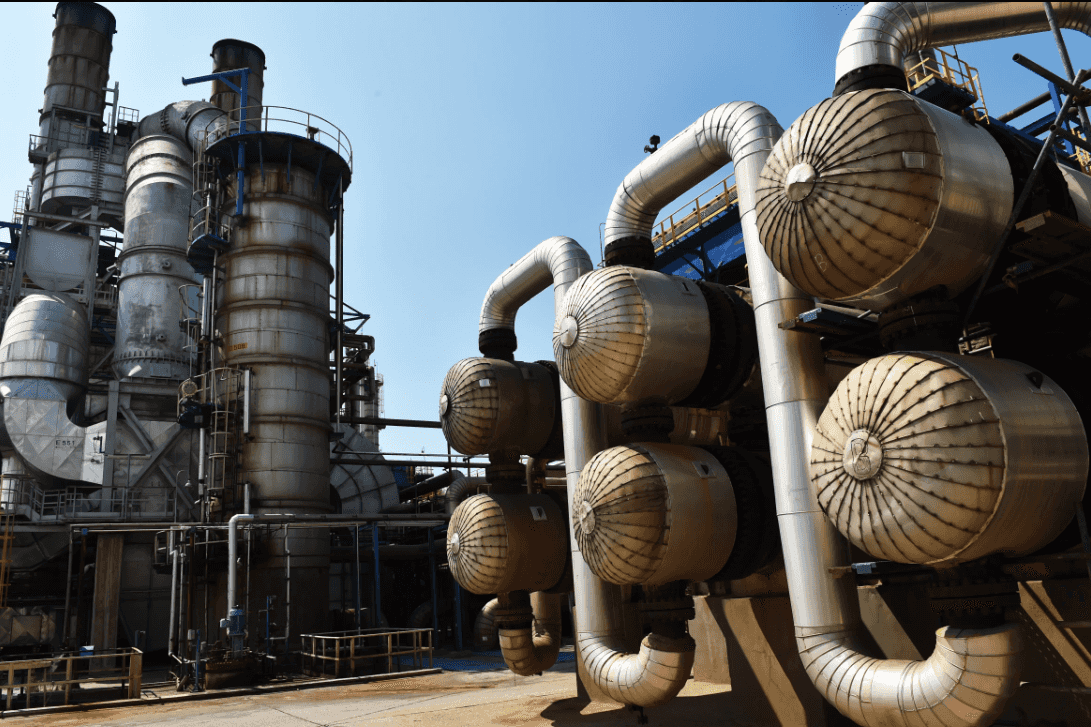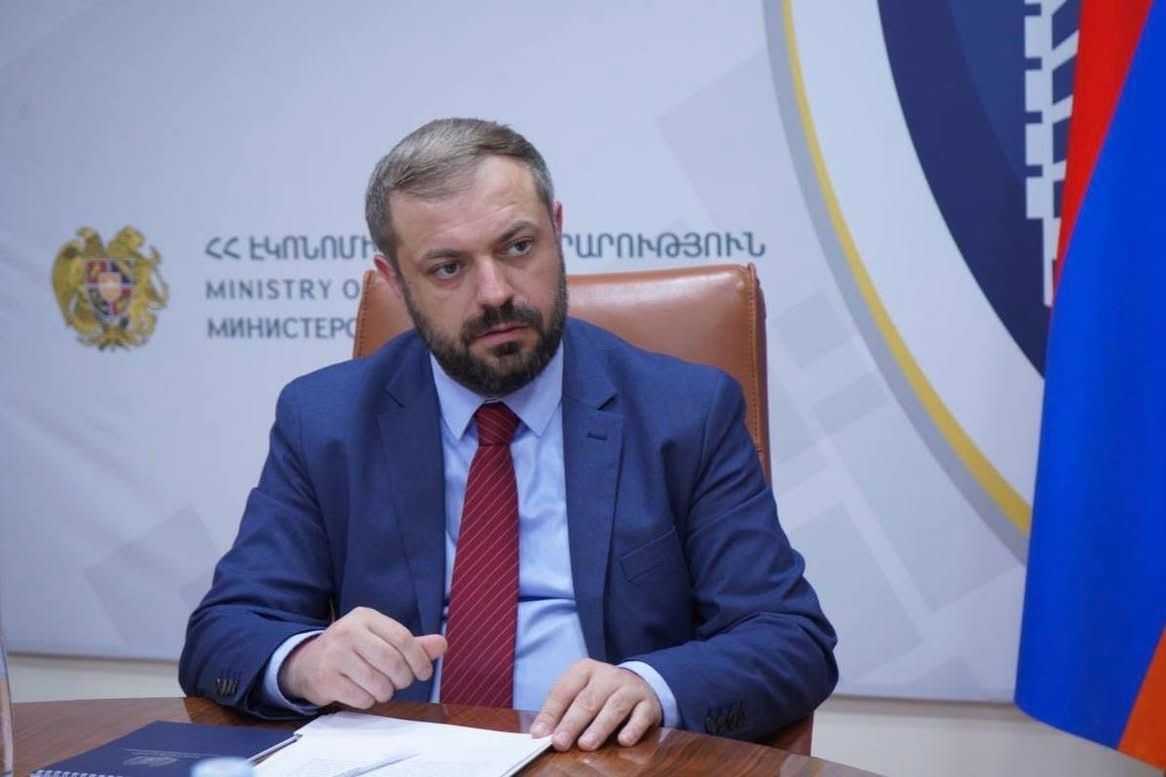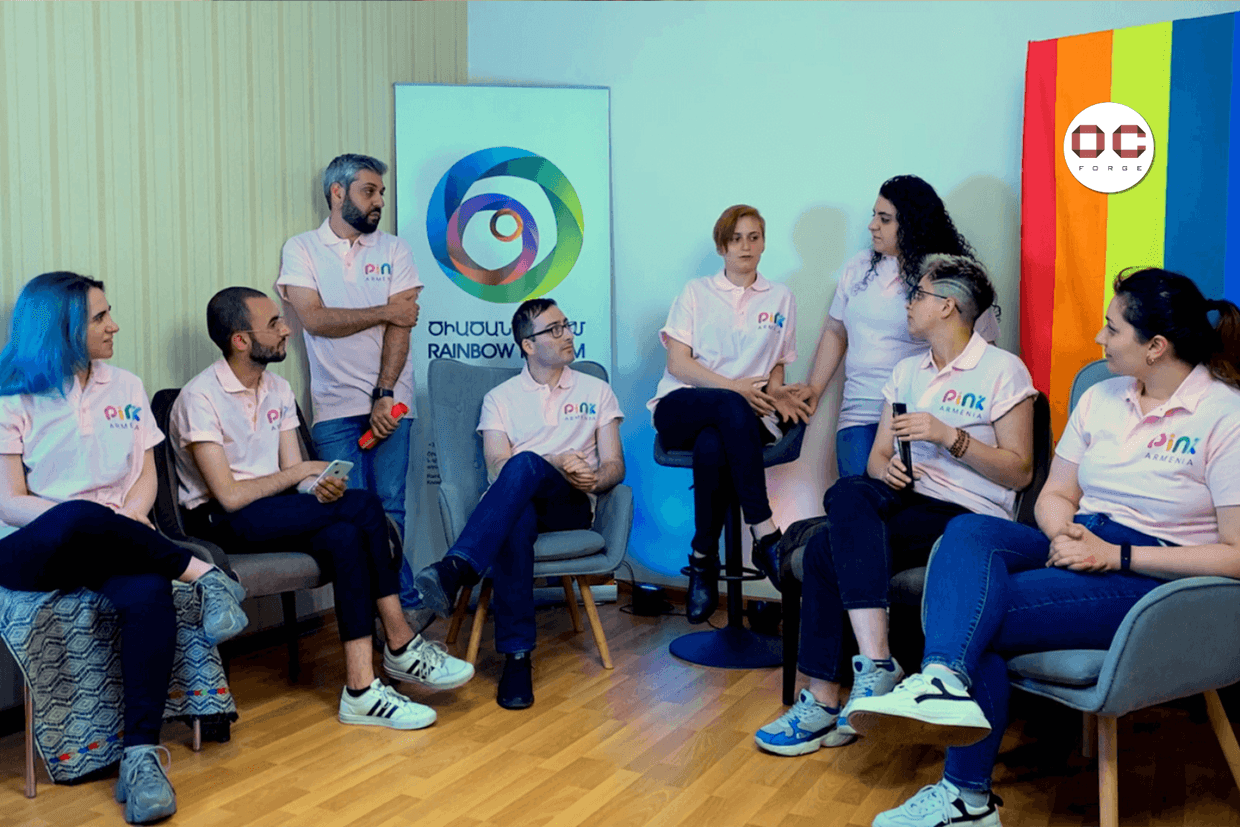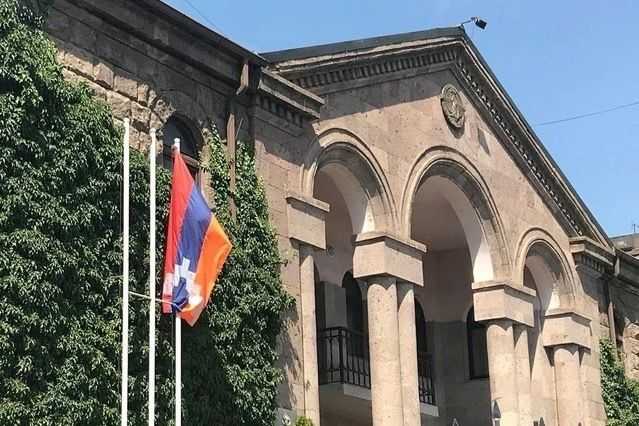
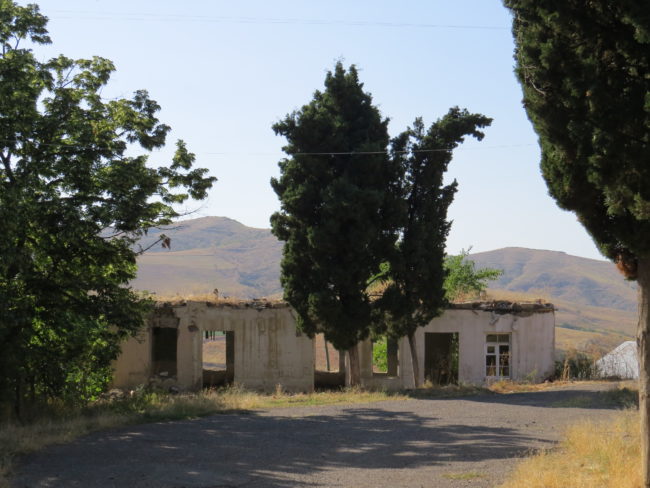
 Barekamavan, a village on the border between Armenia and Azerbaijan, regularly comes under fire. Unfortunately for Barekamavan’s besieged residents, this is not their only problem, and with people moving away, the village faces extinction.
Barekamavan, a village on the border between Armenia and Azerbaijan, regularly comes under fire. Unfortunately for Barekamavan’s besieged residents, this is not their only problem, and with people moving away, the village faces extinction.
[Read in Armenian — Հոդվածը հայերեն կարդացեք]
Barekamavan means ‘the village of friendship’ in Armenian. This is the name of a village in Tavush Province, north-eastern Armenia, which lies on the border with Azerbaijan. Sometimes people in Tavush call the village by its former name, Dostlu, which means friendship in Azerbaijani. But there is no longer any friendship between Armenians and Azerbaijanis in Barekamavan, and the village itself is on the brink of disappearing. The main reasons are the periodic shelling from Azerbaijan and a bleak economic situation.
Barekamavan is pinned to the side of the mountains; on the other side, lies the Azerbaijani village of Kamarli. The nearest Armenian villages of Koti and Dovegh are about 10 kilometres from Barekamavan. Surrounded by hills and forests to the west, to the east lies a mountain dotted with landmines, military posts, and barbed wire fences. From there, the village lies directly in sight of the Azerbaijani soldiers.
In the centre of the village stands a brand new church, the legacy of one of Barekamavan’s residents who moved to Russia. Nearby stands a memorial to people from the village who died in the conflict over Nagorno-Karabakh. These are the only new structures in Barekamavan.
In the village centre, a few dilapidated buildings house the village administration, post office, and school. On the surrounding hills half-destroyed houses without roofs can be seen — a reminder of the 1992–1994 war. Embedded in some buildings are the traces — either complete or partial — of shells. Some are no more than gaping holes. Residents know practically by heart which damage was caused in ‘that war’ and which in ‘this one’.
‘The moving force of the community’
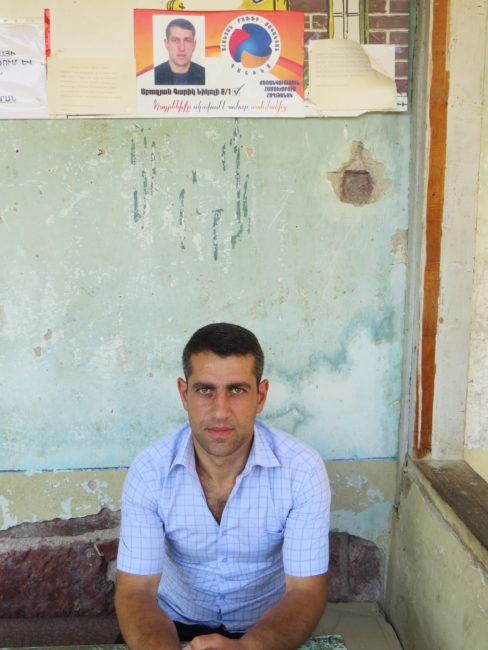
According to former head of the Barekamavan village council, Garik Abazyan, 393 people were registered as living in the village as of 1 January. In reality, no more than 150 people (around 60 families) are permanent residents, mostly elderly people. Only 20 families have children of school or preschool age. Others have moved to Russia, Yerevan, or Ijevan, the administrative centre of Tavush Province. Some also got to Russia seasonally for work.
For a second year in a row the village school has taken in no new children. Only 19 children attend the school, even though there are 17 teachers and staff. Nevertheless, the village administration displays a USAID poster with the rather ambiguous slogan: ‘Youth — the driving force of the community’ which in the local language could also be translated as ‘Youth — the moving force of the community’.
‘I myself also moved my family to Yerevan — away from the bullets. Before, when I was the head of the village council, my wife and children lived in Barekamavan despite everything. Now the situation is different, it makes no sense to leave them here risking their lives. Just a few days ago the village was fired on again from that peak’, Garik says, pointing to the east towards an Azerbaijani military position.
The 35 year old is convinced that in the event of a repeat of last August’s heavy bombardments, nobody will stay in the village. Back then, the villagers rallied their faith and hope for a better future, which helped them to endure the shells falling on their roofs and the bullets whistling through the streets. Today that faith and hope have all but disappeared.
A ministerial benefactor
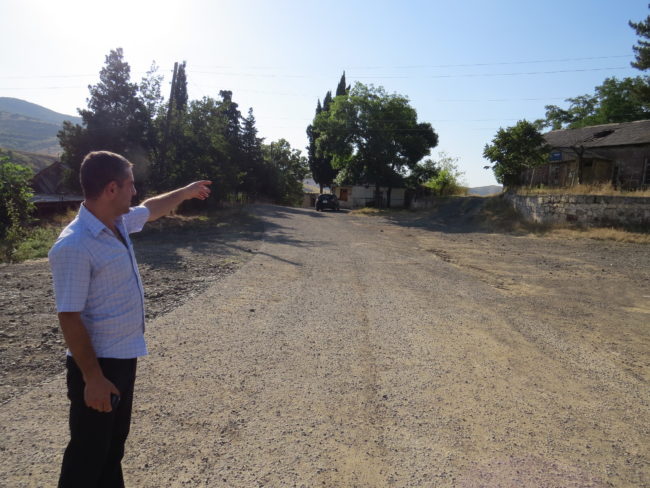
Faith in a better future had been placed almost exclusively in former Defence Minister Seyran Ohanyan. Through his efforts, the ministry had taken charge of Barekamavan, paying for the residents’ electricity, and providing the village with two high-capacity ZIL 131 lorries, which are necessary for people living in mountainous areas like Barekamavan. The Ministry even obtained a flock of 100 sheep for the villagers, to replace ones that had been taken by Azerbaijan.
According to many of the villagers, Ohanyan didn’t only focus on the welfare of Barekamavan, but other borderline villages in Tavush Province as well.
‘Of course in a country like Armenia, it was not possible for such an honest person [like Ohanyan] to hold onto his position for long. That was why he was removed from his position, and now our benefactor has gone over to the opposition, and nobody has any use for us — especially the government’, says Abazyan.
‘Farmlands under fire’
The villagers own 340 hectares of private land, but since 1991 not a single hectare has been cultivated, because the area regularly comes under fire and parts of it are mined. The villagers can only cultivate 55 hectares of land which lies in their household plots. However, this land is not sufficient to provide them with their livelihoods.
The only other jobs in Barekamavan are the aforementioned school, with a staff of 17, the village council, with its three employees, and the post-master. Three villagers also serve on a contractual basis in the nearby military base.
Several of the men go to Russia for seasonal work. Others survive on state pensions or social welfare payments from the California-based Paros social fund.
‘At least in Yerevan they are not shooting at us’

By Barekamavan standards, Abazyan’s family is quite well off — his parents keep a herd of 45 cattle in the mountains. And now Garik is preparing cattle feed for the winter. However, having prepared the hay, Garik will return to Yerevan again.
When asked what he does there, the young man shrugs his shoulders, ‘what is there to hide — my parents help us out, my wife’s parents help too. That is how we live. At least in Yerevan they are not shooting at us. There at least I don’t have to fear for the lives of my family. There is some kind of future. It’s better than living here under fire…’
Garik lost his position as head of the village council after Armenia’s 328 councils were amalgamated into 34 territorial units, with eight villages in Tavush incorporated into one administrative unit centred around the town of Noyemberyan.
Under this programme, Berekamavan no longer has a village head, only a municipal representative, who occasionally appears on the village council. However, Garik is convinced that the programme failed in its main objective of saving money, as according to him, the three workers on the village council receive the same salary as before. Only their name and status has changed, but not the cost of maintaining the institution.
In fact, the new system has only added to the problems of this remote borderline village in the Tavush mountains. The municipal representative can only issue certificates of residency to the villagers. For everything else, the people of Barekamavan have to travel to the town of Noyemberyan, 20 kilometres away. That is where they go to receive medical assistance. And as there is no public transport running to and from Barekamavan, the villagers have to find other ways of getting there.
Irregular water and no gas
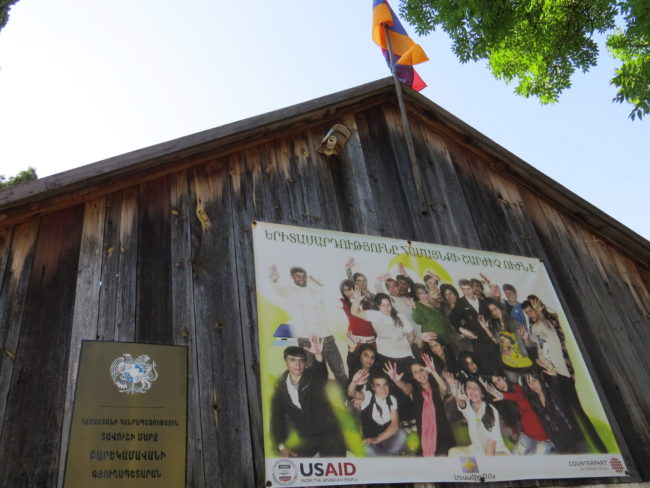
The next biggest problem after the Azerbaijani bullets and unemployment, is the almost complete lack of irrigation or even drinking water. There are several springs in the vicinity of Barekamavan, but water comes irregularly, particularly in years of drought. This year the villagers have been lucky — there is water in the springs, they just need to carry it to their homes in buckets and canisters.
In terms of the gas supply to the village, a wholly interesting, paradoxical situation has occurred. Under the government-approved programme to bring gas supplies to Barekamavan, the International Fund for Agricultural Development spent ֏10 million ($21,000) extending a pipeline to the village from nearby Koti. However, there is no money for gas meters or pipes to bring the gas from the mains in Barekamavan into people’s homes, and Gazprom-Armenia, which has a monopoly, will not install them at their own expense.
As a result, there is gas in Barekamevan, but none of the villagers can access it in their homes. And this despite the state programme for supplying the borderline villages of Voskepar, Baganis, Voskevan, Koti, and Barekamevan with gas saying that the state itself should be paying for residents’ gas.
Some residents of Barekamavan have begun dismantling their homes with a view to selling the parts as building materials. To find a buyer for a home in a borderline village under fire is impossible. But according to the villagers, you can fetch as much as $1,000 for the materials from a dismantled home…
[Read OC Media’s report from Azerbaijan: Living on the the Armenian–Azerbaijani border: alone and under fire]
[Read OC Media’s report from Nagorno-Karabakh: A year after the war in Nagorno-Karabakh’s frontline village of Talish]
[See Saferworld’s photo report from Azerbaijan: A snapshot of life along the Azerbaijan–Armenia border]


